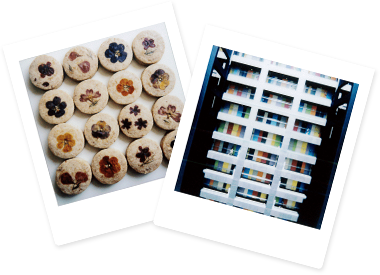Nostalgic for Instant Photography?


Get to know the INSTAX lineup from FUJIFILM:
November of 1998 FujiFilm Japan introduced the Instax brand with release of Instax Mini film and the Instax Mini 10 camera (alternatively Cheki/チェキ). May of 1999 Instax Wide film and the Instax Wide 100 camera brought the option for bigger instant photos. FujiFilm’s Instax Mini cameras made their 2001 North American debut as the Polaroid MIO in collaboration with the U.S. company. By February 2008 Polaroid announced the cessation of their ever popular, instant photography offerings. Two years later FujiFilm and Polaroid would collaborate once again on the Polaroid PIC-300; a rebranding of FujiFilm's Cheki Instax Mini 7/7S model. [1] [2]
In the decade since, FujFilm’s Instax brand has become a global force all on its own. Instax Mini 8 and Mini 9 are the most recognizable models. There are now over a dozen instant cameras and printers to choose from, in three film formats. Whether a casual user or photography enthusiast - you’ll find a model and price point to suit your needs!
Instax Mini Cameras + Printers
- Type: Analog; Entry
- Price Tier: Budget
- Availability: Limited distribution; While supplies last
- Colors: 5 Standard, 3 Clear Ltd. Ed., Retailer custom, Special Ed. themed
- Replaces: mini 8+, mini 8, mini 7S (all previous models avail: ltd dist.)
- Learn more...

instax mini 9
- Type: Analog; Entry
- Price Tier: Lower to Upper Mid-range
- Availability: Limited distribution
- Colors: Pink; 2016 Red (discontinued)
- Similar: mini Disney TSUMTSUM
- Learn more...

instax mini HELLO KITTY
- Type: Analog; Entry
- Price Tier: Budget
- Availability: Readily available
- Colors: 5 Standard
- Replaces: mini 9
- Learn more...

instax mini 11
- Type: Analog; Mid-Spec
- Price Tier: Mid-range
- Availability: Limited distribution; While supplies last
- Colors: 3 Standard, Special Ed. themed
- Similar: mini 26
- Learn more...

instax mini 25
- Type: Analog; Higher Spec
- Price Tier: Budget to Lower Mid-range
- Availability: While supplies last
- Colors: 6 Standard, Retailer custom
- Replaces: mini 50S
- Learn more...

instax mini 70
- Type: Analog; High Spec
- Price Tier: Lower to Upper Mid-range
- Availability: Readily available
- Colors: Black, Brown, Red
- Learn more...

instax mini 90 NEO CLASSIC
- Type: Hybrid; Instant + Digital camera; Bluetooth printer
- Price Tier: Premium
- Availability: Readily available
- Colors: 3-4 Standard (market dependent)
- Learn more...

instax mini LiPlay
- Type: Bluetooth digital printer w/multi-phone connnect
- Price Tier: Mid-range
- Availability: Readily available
- Colors: 3 Standard
- Learn more...

instax mini Link
- Type: Digital printer w/WiFi
- Price Tier: Mid-range
- Availability: While supplies last
- Colors: White/Silver, White/Gold
- Replaces: SHARE Smartphone Printer (SP-1)
- Learn more...

instax SHARE SP-2
Instax SQUARE Cameras + Printers
- Type: Analog; High Spec
- Price Tier: Lower to Upper Mid-range
- Availability: Readily available
- Colors: 5 Standard, Special Ed. themed
- Learn more...

instax SQUARE SQ6
- Type: Hybrid; Instant + Digital camera
- Price Tier: Premium
- Availability: Readily available
- Colors: Matte black, Beige
- Replaces: SQUARE SQ10
- Learn more...

instax SQUARE SQ20
- Type: Digital Printer w/WiFi
- Price Tier: Mid-range to Premium
- Availability: Limited stock
- Colors: White, Black
- Learn more...

instax SHARE SP-3 SQ
Instax WIDE Camera
- Type: Analog; Mid-Spec
- Price Tier: Lower to Upper Mid-Range
- Availability: Color dependent
- Colors: Black, Toffee (ltd dist.), White (ltd. dist.), Candy (discontinued)
- Replaces: WIDE 210, WIDE 200, WIDE 100 (all previous models discontinued)
- Learn more...

instax WIDE 300
Instax Film
FujiFilm Instax film is compatible with select camera models by other makers (e.g. Lomography, Polaroid, Sharper Image, Mint, etc.).
- Film Speed: ISO 800/30°
- Frame dimensions: 54(W) x 86(H) mm
- Picture dimensions: 46(W) x 62(H) mm
- No. of photos: 10 per cartridge
- Designs: color film - white, simple color, patterned, ltd. ed. character (Disney, Sanrio, anime, etc.); monochrome film - white frame
- See more...

instax mini film
- Film Speed: ISO 800
- Frame dimensions: 86(W) x 72(H) mm
- Picture dimensions: 62(W) x 62(H) mm
- No. of photos: 10 per cartridge
- Designs: white, black, marble, + star illumination color film
- See more...

instax SQUARE film
- Film Speed: ISO 800/30°
- Frame dimensions: 108(W) x 86(H) mm
- Picture dimensions: 99(W) x 62(H) mm
- No. of photos: 10 per cartridge
- Designs: white framed color, white framed monochrome
- See more...

instax WIDE film
Tips
Shopping for Instax
All Instax cameras and printers ship with a one year limited warranty, a user guide or manual, and a power supply (initial one times use batteries; rechargeable internal or removable battery with charging apparatus). The cameras featured include a wrist or shoulder strap and a close-up attachment, if macro feature is not built-in. Cameras and printers may have model specific add-ons. In most countries film is not included with the camera. Branded and aftermarket accessories such as cases, albums, camera and film decals are sold separately.
Before finalizing a purchase, price compare across online markets and regional stores (photo, tech, and retail). Prices vary seller to seller; color to color. Discounts can be found on camera, film and accessory bundles. Price each item in a bundle to ascertain potential savings. Some sellers present the option of purchasing extended warranty or coverage. Lastly, remember to calculate sales tax and shipping into the total cost.
Loading Film
Prior to loading a new film cartridge, be sure batteries are properly inserted and holding charge. OEM rechargeable batteries (internal or removable) must be charged for the recommended time before first use of camera. Replaceable batteries must be of the correct size and type; all batteries in use should match in brand and performance.
Next verify the camera/printer is empty or contains a finished cartridge. Several Instax models have a film confirmation window, revealing the yellow line of a film cartridge. Instax systems utilize manual, LCD, and onscreen counters and LED lights to track remaining photos. The manual counter displays an S (meaning either Start or a Japanese word for empty, Sora No/空の). Do not open the film compartment or unload a cartridge before current photos have been used. Doing so causes the foremost photo, if not all, to be ruined by light exposer. The counter would be falsely reset, as well.
Gently unlock the back cover to the film compartment. Unwrap a new pack of compatible film. Align the yellow marks found on the cartridge and in the film compartment. Insert film straight in then close and lock back cover. Turn on camera power and wait for flash to finish charging (indicated by flash charging light). Press the shutter button to automatically eject the film cover slide. Allow the film feeder motor to finish running before removing cover or photos. The film counter will change from empty to 10.
Parallax Error
Through the lens (TTL), mirrored (reflects lens image up to optical viewer) and electric viewfinders allow the user to see what the lens will capture. Analog Instax cameras are mirrorless point and shoots. The viewfinder is separate from the lens, sitting a few centimeters higher and off to the side. This difference in viewing angle, the parallax error, may result in displaced photo subjects. Below are a few methods people have tried to adjust for this error.
- Method One: Position the center of the subject in the bottom quarter of the viewfinder nearest the lens. (i.e. If lens sits to the lower right of the viewfinder, position subject in bottom right corner.)
- Method Two: Position subject in center of viewfinder. Just before capturing photo, slightly tilt lens up and to the side corresponding to viewfinder. (i.e. If viewfinder sits up and to the left of lens, tilt lens slightly up towards the left.)
- Method Three: Frame subject in viewfinder as desired. Without changing one’s position, maneuver the body of the camera directly in front of one’s face. So, that the lens is in line with the composition eye. In addition, the viewfinder may display less of the scene than is captured. In this instance, move closer to subject whilst framing to decrease negative space.